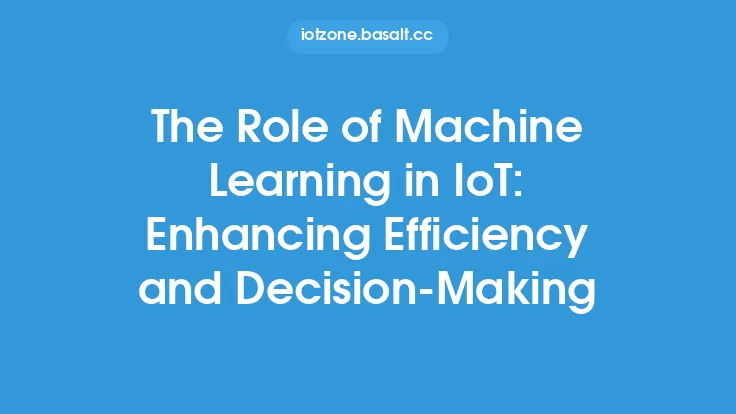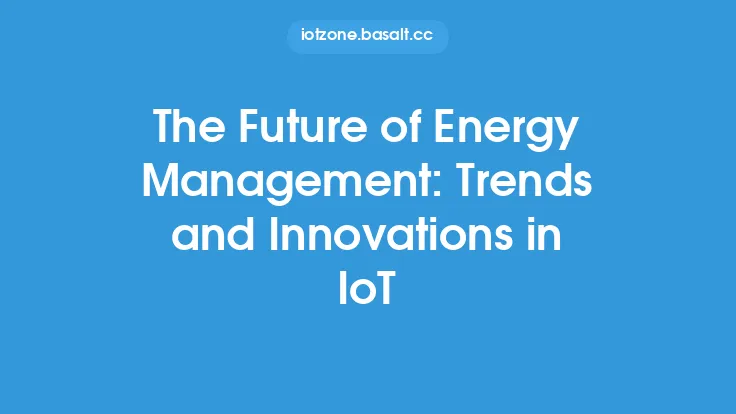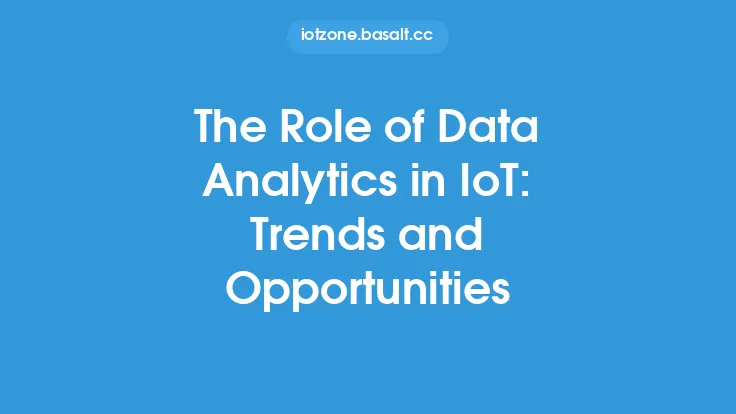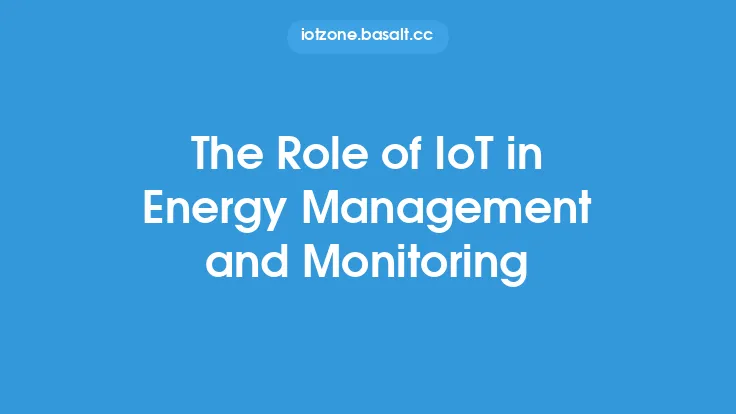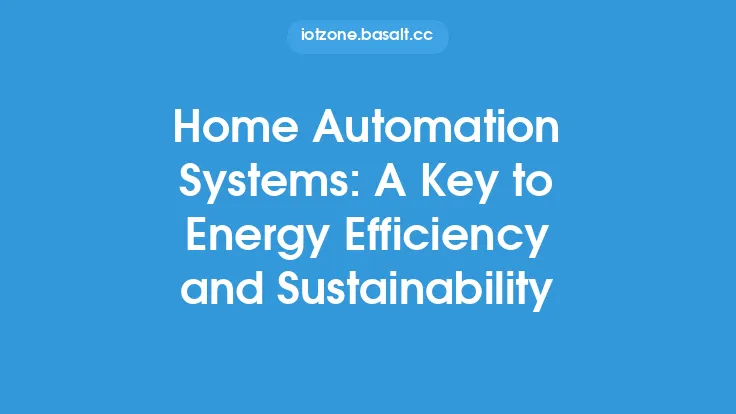The increasing demand for energy, coupled with the need to reduce carbon emissions and mitigate climate change, has led to a growing focus on energy efficiency and sustainability. The Internet of Things (IoT) has emerged as a key technology in achieving these goals, enabling the creation of more efficient, responsive, and sustainable energy systems. By leveraging IoT devices, sensors, and data analytics, organizations and individuals can optimize energy consumption, reduce waste, and promote sustainable practices.
Introduction to IoT in Energy Management
IoT in energy management refers to the use of IoT devices, sensors, and data analytics to monitor, control, and optimize energy consumption and production. This can include a wide range of applications, from smart home energy management systems to industrial-scale energy monitoring and control systems. The use of IoT in energy management offers several benefits, including improved energy efficiency, reduced energy costs, and enhanced sustainability. By providing real-time data and insights on energy consumption, IoT systems can help identify areas of inefficiency and opportunities for improvement, enabling more informed decision-making and optimized energy management.
Key Components of IoT in Energy Efficiency and Sustainability
Several key components are involved in IoT-based energy efficiency and sustainability solutions. These include:
- IoT devices and sensors: These are used to collect data on energy consumption, temperature, humidity, and other factors that can impact energy efficiency. Examples of IoT devices and sensors used in energy management include smart thermostats, energy meters, and temperature sensors.
- Data analytics: This involves the use of software and algorithms to analyze data from IoT devices and sensors, providing insights and recommendations for improving energy efficiency and sustainability.
- Communication protocols: These enable IoT devices and sensors to communicate with each other and with central systems, facilitating the collection and analysis of data.
- Cloud computing: This provides a platform for storing, processing, and analyzing large amounts of data from IoT devices and sensors, enabling real-time monitoring and optimization of energy consumption.
Applications of IoT in Energy Efficiency and Sustainability
IoT has a wide range of applications in energy efficiency and sustainability, including:
- Smart homes and buildings: IoT can be used to optimize energy consumption in homes and buildings, using devices such as smart thermostats and energy-efficient lighting systems.
- Industrial energy management: IoT can be used to monitor and optimize energy consumption in industrial settings, such as manufacturing facilities and data centers.
- Renewable energy systems: IoT can be used to monitor and optimize the performance of renewable energy systems, such as solar and wind power systems.
- Energy storage systems: IoT can be used to monitor and optimize the performance of energy storage systems, such as batteries and fuel cells.
Benefits of IoT in Energy Efficiency and Sustainability
The use of IoT in energy efficiency and sustainability offers several benefits, including:
- Improved energy efficiency: IoT can help optimize energy consumption, reducing waste and improving overall energy efficiency.
- Reduced energy costs: By optimizing energy consumption and reducing waste, IoT can help reduce energy costs and improve bottom-line profitability.
- Enhanced sustainability: IoT can help promote sustainable practices, reducing carbon emissions and mitigating climate change.
- Improved decision-making: IoT provides real-time data and insights, enabling more informed decision-making and optimized energy management.
Challenges and Limitations of IoT in Energy Efficiency and Sustainability
While IoT has the potential to play a significant role in energy efficiency and sustainability, there are several challenges and limitations that must be addressed. These include:
- Data security and privacy: The use of IoT devices and sensors can raise concerns about data security and privacy, particularly in industrial and commercial settings.
- Interoperability and standards: The lack of standardization and interoperability between different IoT devices and systems can create challenges for integration and scalability.
- Cost and complexity: The cost and complexity of IoT systems can be a barrier to adoption, particularly for small and medium-sized enterprises.
- Scalability and reliability: IoT systems must be scalable and reliable, able to handle large amounts of data and provide real-time insights and recommendations.
Future Directions for IoT in Energy Efficiency and Sustainability
The future of IoT in energy efficiency and sustainability is likely to be shaped by several trends and innovations, including:
- Artificial intelligence and machine learning: The use of artificial intelligence and machine learning algorithms can help improve the accuracy and effectiveness of IoT-based energy management systems.
- Edge computing: The use of edge computing can help reduce latency and improve real-time processing and analysis of IoT data.
- 5G and other wireless technologies: The use of 5G and other wireless technologies can help enable faster and more reliable communication between IoT devices and central systems.
- Blockchain and other distributed ledger technologies: The use of blockchain and other distributed ledger technologies can help improve the security and transparency of IoT-based energy management systems.
